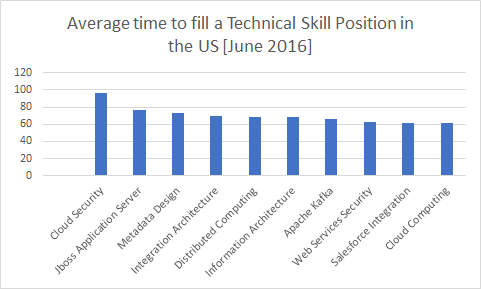 Benefits of a symbiotic relationship between the engineer and tech business
Benefits of a symbiotic relationship between the engineer and tech business
First I aim to display how businesses require individuals skilled in the latest technologies in order to stay relevant. Then I offer the idea that engineers on the other hand, are as valuable as their skills in such technologies. I suggest a business model where technologists shifts from supporting characters to co-star. Hand-in-hand with business functions, technology teams drive innovation and cocreate products, services, and experiences that drive growth, revenue & competitive advantage. To show the importance of such a relationship, I will present incentives for both sides: the company as a market entity, and the engineer as an individual that provides services.
A perspective for tech companies
There are two issues that are today causing a major bottleneck in the tech industry:
(1) the shortage of talented employees for businesses;
(2) how technological progress threatens to render obsolete companies that do not innovate.

Burning-Glass Technologies reviewed 40 000 online job postings in the US. They determined that roles that require technical management skills take over a hundred days to fill, on average. Rather than pour more money into the recruiting battle, companies are testing new strategies for developing the technical talent they need. At Box, VP of Sales Engineering Matt Norton found that the best recruiting pipeline for solutions engineers was not yet another job board, but Box’s own customer support team. In this increasingly competitive market for talent, tech companies are leading a new type of labor innovation: retraining as the new recruiting. Although investments in computer science education and vocational schools will be invaluable in the long run, retraining offers a more immediate solution.
The second big threat for companies is advancing automation and digitization. 62% of executives believe they will need to retrain or replace more than a quarter of their workforce between now and 2023. The threat looms larger in the United States and Europe (64% and 70% respectively) than in the rest of the world (only 55%)—and it is felt especially acutely among the biggest companies. 70% of executives at companies with more than $500 million in annual revenues see technological disruption over the next five years affecting more than a quarter of their workers.
Both these aspects likely will require unprecedented levels of collaboration among business and technology functions during the design, development, and deployment of products and services. As companies race to be on the forefront of innovation, they will adopt not just Silicon Valley’s technological contributions, but also the blueprints for retraining talent.
How I approach this as an engineer
To start off their careers, most people opt for the four years college/university degree route. During this time they learn new skills – mostly those directly relevant to their chosen profession – however, only a few skills truly hold any value in the long-term.
According to Denning and Brown, authors of A New Culture of Learning, “The half-life a learned skill is 5-years” - this means that much of what you learned 10 years ago is obsolete and half of what you learned 5 years ago is irrelevant. One important consequence is that the idea of “planning a career” is quickly becoming outdated. Traditional job descriptions are going out the window, and instead, recruiters examine the applicant’s most relevant skills. Dynamic career paths may be the key to dealing with faster-changing environments.
While I agree that there is a problematic, I believe some skills are longer lasting than others. For instance, among my own skills, real-time systems can be applied in drones as well as any edge system; spatial navigation can be applied in drones but also in a wide swath of robotics. Such skills are ubiquitous. Additionally, since they relate to my chosen profession, I will be building directly on them.
Nevertheless, the tech field is changing fast. Within robotics, the field of soft robotics – plastic actuators mainly – is causing a boom in healthcare. The soft robotics market was valued at %607.4 million in 2018 and is expected to register a CAGR of 40.5% by 2024. Despite this, universities have not updated their programmes to teach soft robotics. To be fair, there many drawbacks for institutions of learning to update their programme, while individuals can experiment different approaches in a manner that is much more nimble.
In fact, there is an onus to constantly experiment, innovate, test, and not to get bogged down in details. This reminds me of MIT’s makerspaces and hands-on education. This is also a major part of the symbiotic relationship with companies. A company is slow to make decisions, while individuals can create working prototypes and test ideas autonomously. Project-based learning is often lauded as this hands-on approach.
Also, to revise my skills continuously, I seek to stay informed of current news. By understanding the state of the tech market, I can better watch out for changes constantly. This is a gruelling task, even for research-based venture-capital firms like Loup Ventures who expressly choose a few topics of interest: developments relating to robotics, AI, VR and AR.
All in all
In this skill-based approach, employees and employers can find common ground. Becoming involved in projects is, in my opinion, the best way to refine my skills. Despite all of this, I am keenly aware that your environment and the people you know frame the choices you have in life. While I’m still young and ambitious, I hope to get involved in such innovative tech projects.

